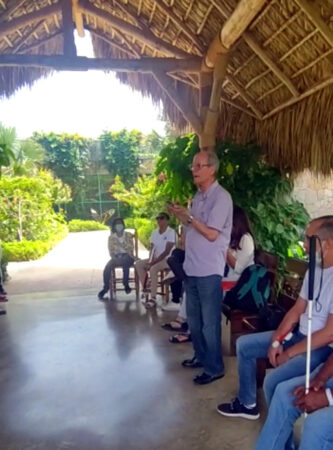
Simón Guerrero, is a lecturer at Universidad Autónoma de Santo Domingo (Autonomous University of Santo Domingo) and long-standing member of BirdsCaribbean. Below he shares his remarkable experiences birding with the National Board of the Blind in Santiago and how they celebrated the Caribbean Endemic Bird Festival this past June.
The idea of introducing blind people to birds through song occurred to me in the early nineties when I attended a bird monitoring course sponsored by the US Forest Service in La Amistad International Park, a cross-border park created by the governments of Costa Rica and Panama. Among the attendees of the workshop were prominent American ornithologists such as C. J. Ralph and Greg Butcher. One of the course instructors was incredibly good at identifying birds by song. His ability to recognize a bird just by listening to a couple of notes was impressive.
Upon witnessing such skill, I commented to him, with some irony, “But the work you do could be done by a blind person!”
“It could be,” was his short reply.
From that moment, I began to consider the possibility of organizing a bird workshop for the blind using bird song as a basis for identification. As soon as I returned to Santo Domingo, I met with the National Board for the Blind to make arrangements to give a talk on several Dominican birds that live in urban areas, since these species were most accessible to our intended participants.
Putting ideas into action
I have been teaching since I was 18 years old and thought I had already experienced the vast range of rewarding experiences offered by this profession. But I never would have imagined anything like this. I had never seen the level of enthusiasm or interest in learning as that shown by the blind children. What impressed me most was that every time they heard the song of the bird whose song they were familiar with they would exclaim, “Oh, the Mockingbird!” as though they were experienced ornithologists and those birds were part of their daily routine.
As a child I learned to produce a cooing sound by cupping my hands together, and blowing through this hollow space, allowing me to imitate with relative fidelity the songs of the three most common doves in the city of Santo Domingo: Common Ground Dove, Mourning Dove, and White-winged Dove. When the blind children learned how I was able to reproduce these calls they were dazzled. They asked me to teach them to use their hands to imitate bird calls too. I was a little unprepared, because it was my first time teaching blind students and the truth is that I was not trained in their learning techniques. They forgave my clumsiness and tried to help me. They lined up and took turns touching my hands while I imitated the song of the doves. It was an indescribable experience! It certainly made me feel needed and useful as a teacher.
Celebrating Caribbean endemic birds and their songs
For this year’s Caribbean Endemic Bird Festival, my team and I scheduled several activities with the goal of highlighting the fascinating lives of birds, including those that can only be found in the Dominican Republic. We created several small wildlife refuges where birds and other wildlife could find food and shelter in the city. We also installed artificial nests specifically for endemic species, like the Hispaniolan Parakeet, that nest in cavities. But the most rewarding activity was with participants from the National Board of the Blind.
During the first event, when we met with the Board of Trustees, we played audio recordings of the songs of several of our native and endemic birds so that those taking part could identify the birds by their calls. It was unclear who was more impressed, the participants or me. The possibility of identifying birds by song and learning about their behavior was more exciting than they expected. In addition to their enthusiasm and interest in the subject, I was surprised by how much they knew about wildlife and a wide variety of ecological and conservation issues. One of the participants shared with me that she was a fan of nature documentaries and that she listened to them frequently. Vianny, one of the most enthusiastic participants, suggested creating a WhatsApp group named “Cuidemos las Aves” (Let’s take care of birds) and asked my permission to record the meeting to share on her YouTube channel.
Mingling bird songs with music
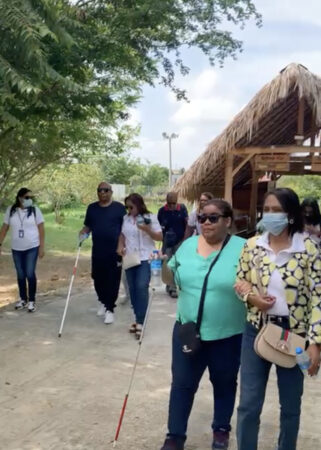
For the second event, we went to the University Campus to bird by ear. We used the audio recordings again to encourage the natural song of the wild birds that live in the city and attract those that may be too shy to come into the open. We were also treated to a violin concert performed by Luis Alfredo Morales, one of the members of the Board of Trustees. Luis spent a year studying music at the University of Missouri in America. It was a fantastic event for both students and teachers. Following this, we planted a native bush (Hamelia patens) in the university garden. This plant attracts hummingbirds and many other birds. Gabino Ortiz, one of the participants, asked me for a bush so that he, too, could attract birds to his home garden.
The third and last activity- another bird by ear, was held at the Botanical Garden of Santiago in collaboration with the Board of Trustees for Santiago (the second largest city in the Dominican Republic) and members of the Education Department of the Botanical Garden. We worked with about twenty participants in a much more favorable habitat with a great variety of birds. Members of the Education Department played an active role from conception to execution. They took the opportunity to explain to the participants the objectives of the institution and the services it provides to the community.
I am excited to share that another event, which will take place in Bonao, has already been planned. Also, the Board of Trustees has let us know that they will repeat this birding activity at its headquarters across the country!
Loving birds is human nature
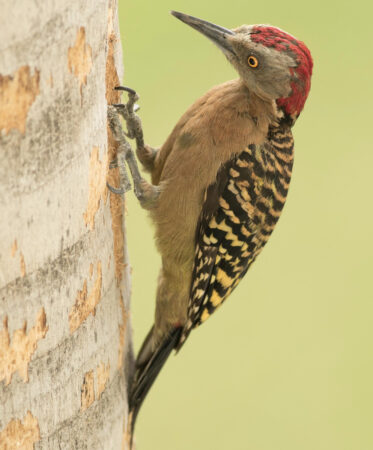
The reaction of the participants made me realize, in retrospect, that the theme of this year’s Festival, “Loving Birds is Human Nature,” is not simply a beautiful phrase.
It asserts the notion that human beings certainly have the innate ability to cherish and respect these fascinating creatures!
Bird activities are an inexpensive and enriching pastime that can be done at any age and help to increase the self-esteem of those who practice it. It is a fun way to learn and make friends while contributing to conserving valuable species that only exist on our island. It is encouraging to know that the National Board for The Blind plans to include this activity with the birds in its regular program of activities. The conservation of endemic birds is a citizen’s duty, but it is, at the same time, a right that assists all people, with no one excluded. Initiating the blind into birdwatching and conservation activities is a meaningful and relevant inclusion.
It is the first time that blind people have participated in this Festival in the DR, and I hope it will not be the last. I hope that this initiative will be adopted by the 20+ countries in which the Caribbean Endemic Bird Festival is celebrated every year.
Learning bird songs and calls can be fun and rewarding as well as helping with your bird identification. Here are the calls of some of the birds participants in Simón’s events might have heard for you to enjoy!
Hispaniolan Parakeet:
Northern Mockingbird:
Mourning Dove:
White-winged Dove:
You can find out more about BirdsCaribbean’s Endemic Bird Festival here:
https://www.birdscaribbean.org/2022/08/caribbean-endemic-bird-festival-celebrates-human-connection-to-birds/
And find out more about Caribbean Endemic Birds in our From the Nest series of blog posts, celebrating our Endemic Birds with fascinating facts, puzzles and fun activities.

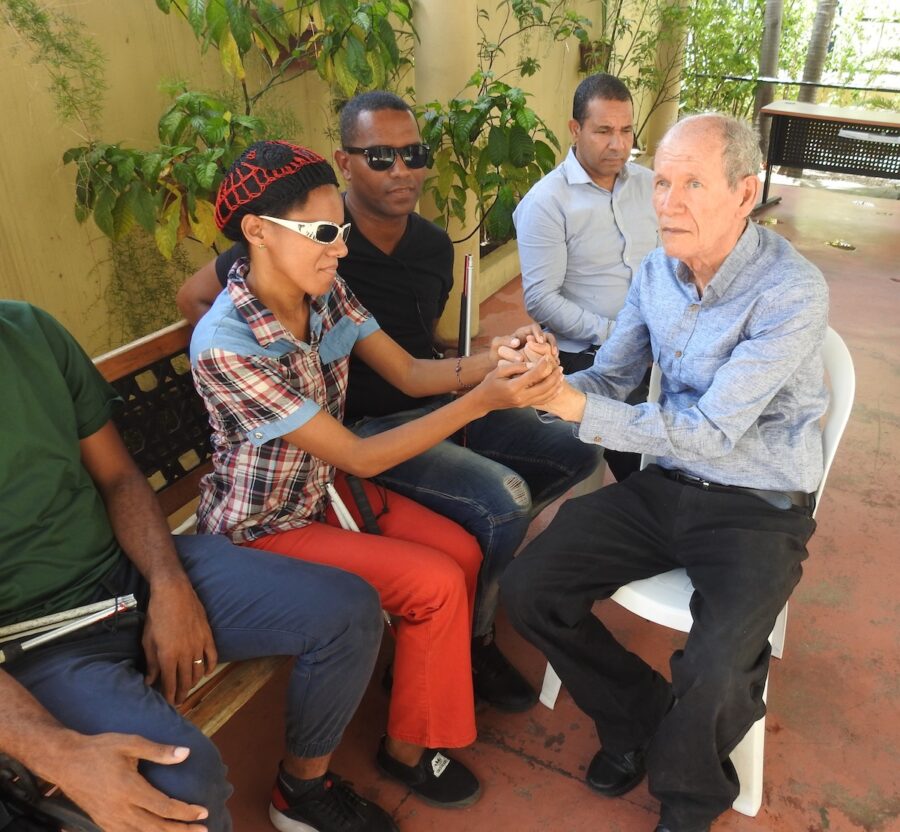
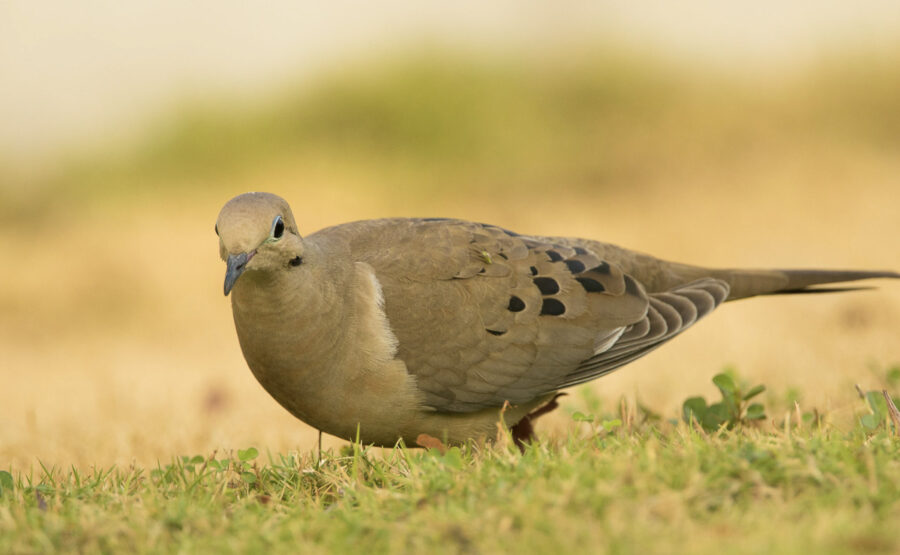

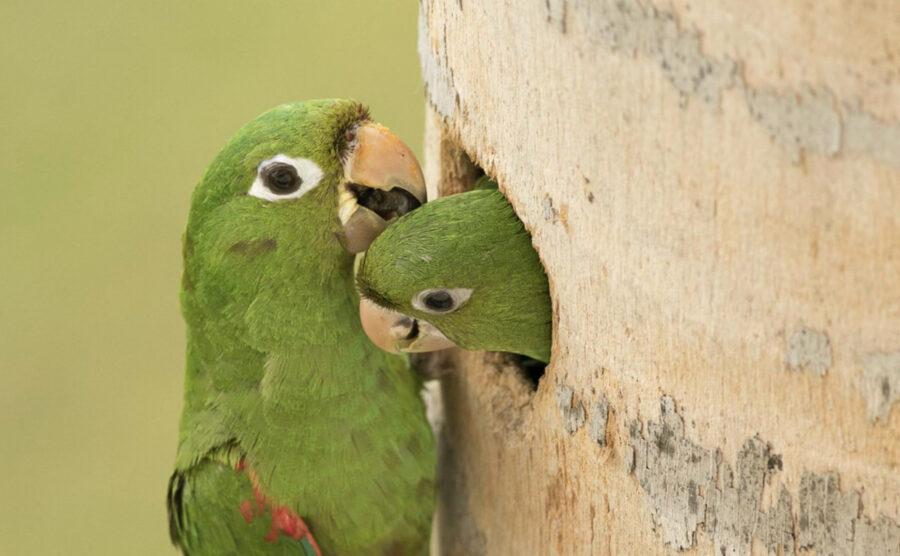
One comment
Comments are closed.